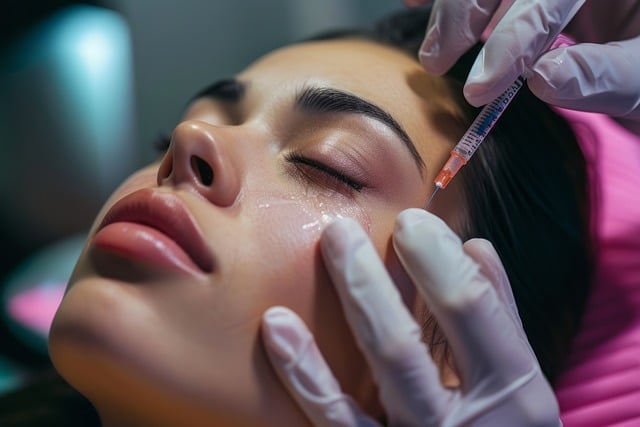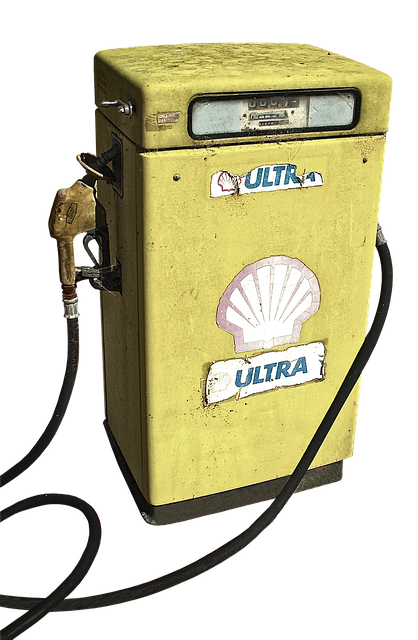Botox and dermal fillers are popular cosmetic treatments with distinct approaches. Botox relaxes facial muscles through a neurotoxin injection to prevent future wrinkle formation, offering 3-6 months of results. Dermal fillers add instant volume by injecting substances like hyaluronic acid for deeper lines, providing 6 months to 2 years of smoothing. Both aim for youthful skin but differ in mechanism and effect. Lifestyle choices, including diet, hydration, exercise, and sun protection, impact the effectiveness of both treatments. Consulting an expert helps tailor the best option based on desired outcomes and individual needs.
Botox and dermal fillers are popular skin rejuvenation treatments, each with unique advantages. This article explores the science behind Botox, its remarkable longevity as a preventative measure, and compares it to dermal fillers. We’ll uncover how Botox works, analyze its durability versus filler effectiveness, discuss safety considerations, and provide insights into choosing the right treatment for individual needs, including lifestyle adjustments for optimal results.
Understanding Botox and Dermal Fillers: A Comparison

Botox and dermal fillers are both popular cosmetic treatments designed to improve facial aesthetics. However, they work in distinct ways and offer different outcomes.
Botox is a neurotoxin that relaxes muscles, preventing contractions that cause wrinkles to form over time. It’s particularly effective for dynamic wrinkles, those created by facial expressions like frowning or smiling. Dermal fillers, on the other hand, are injectable substances—often hyaluronic acid—that add volume and enhance specific areas of the face. They instantly fill in deep lines and hollows, providing a more youthful appearance. While Botox focuses on preventing future wrinkle formation, dermal fillers target existing issues for an immediate result. Each treatment has its advantages and is suited to different needs, depending on whether one seeks long-lasting preventative care or quicker, temporary enhancement.
How Botox Works: The Scientific Perspective

Botox works by relaxing or weakening specific muscles. This action reduces the frequency and intensity of muscle contractions that lead to dynamic wrinkle formation, particularly around the eyes and forehead. From a scientific perspective, Botox is a protein extracted from bacteria called Clostridium botulinum. When injected into the skin in precise amounts, it blocks nerve signals that stimulate muscle contraction, resulting in smoother skin and reduced appearance of wrinkles.
Compared to dermal fillers, which add volume to the skin by injecting substances like hyaluronic acid or collagen, Botox acts differently. It doesn’t add substance but rather relaxes muscles, leading to a more subtle yet effective lifting effect. This makes Botox particularly appealing for individuals seeking natural-looking results that focus on preventing dynamic wrinkle formation rather than filling them in.
Long-Lasting Results: Botox's Track Record

Botox has established itself as a leading treatment in the realm of cosmetic enhancements, particularly when compared to dermal fillers. One of its most notable attributes is its long-lasting effect, offering a more sustained result than many other procedures. The track record of Botox shows that it can effectively reduce the appearance of fine lines and wrinkles for several months with a single treatment.
This longevity is a significant advantage over dermal fillers, which often require repeated injections to maintain results. Studies have demonstrated that Botox’s effects can last anywhere from 4 to 6 months, providing individuals with a convenient and cost-effective solution for anti-aging concerns. This duration gives patients the freedom to enjoy smoother, more youthful-looking skin without frequent visits to medical spas or clinics.
Dermal Fillers: An Alternative Approach to Skin Rejuvenation

When considering skin rejuvenation treatments, many individuals often weigh the options between Botox and dermal fillers. While both procedures aim to restore a youthful appearance, they operate on slightly different principles.
Botox involves injecting a neurotoxin that relaxes facial muscles, reducing the appearance of wrinkles and fine lines. On the other hand, dermal fillers use hyaluronic acid or collagen to add volume and fullness to the skin, smoothing out deep wrinkles and enhancing facial contours. Unlike Botox, which temporarily paralyses muscles, dermal fillers provide longer-lasting results by actually adding substance to the skin. This alternative approach can be particularly appealing for those seeking a more substantial and prolonged transformation in their skin’s texture and definition.
Duration of Effectiveness: A Side-by-Side Analysis

The duration of effectiveness varies between Botox and dermal fillers, offering different temporal advantages for those considering aesthetic treatments. Botox, known for its ability to temporarily paralyze muscles, typically lasts between 3 to 6 months. This makes it a popular choice for addressing dynamic fine lines and wrinkles around the eyes, forehead, and mouth. On the other hand, dermal fillers provide instant results, with effects lasting from 6 months to 2 years, depending on the specific filler type and the body’s natural breakdown of the product. While Botox offers more frequent treatments, dermal fillers provide longer-lasting solutions, catering to individuals seeking longer periods of enhanced facial contours or lip volume.
When comparing the two, understanding their respective timelines is crucial for setting realistic expectations. Botox users may need repeated sessions for sustained results, while dermal filler recipients enjoy a more extended period of satisfaction before needing a touch-up. This side-by-side analysis highlights the diverse needs and preferences that guide individuals’ decisions in the aesthetic treatment realm.
Safety and Potential Side Effects: Considering Risks

When considering Botox versus dermal fillers for cosmetic treatments, safety and potential side effects are paramount. While both procedures aim to enhance facial aesthetics, they carry distinct risks that should be weighed carefully. Botox, a neurotoxin, temporarily paralyzes muscles, reducing the appearance of wrinkles. Common side effects include temporary muscle weakness or paralysis, headaches, and nausea. In rare cases, it can cause more severe issues like difficulty swallowing or breathing.
On the other hand, dermal fillers enhance skin texture and volume by injecting a substance beneath the surface. Potential risks include bruising, swelling, redness, and pain at the injection site. More serious complications can arise if the filler migrates to other areas, leading to asymmetry or discomfort. Comparing these two treatments, Botox may offer a more conservative approach with shorter-term results, while dermal fillers provide longer-lasting enhancements but with an increased risk profile.
Choosing the Right Treatment: Individualized Factors

When considering long-lasting preventative Botox results, it’s crucial to understand that every individual is unique. Both Botox and dermal fillers are popular choices for cosmetic enhancement, but the right treatment depends on various factors. Unlike Botox, which temporarily paralyzes muscles to smoothen expression lines, dermal fillers boost volume and shape by plumping the skin with hyaluronic acid.
Several individualized elements come into play. Skin type, desired outcome, lifestyle, and medical history all influence the effectiveness and longevity of treatments. For instance, someone seeking subtle anti-ageing may prefer Botox, while a patient aiming for dramatic facial contouring could benefit more from dermal fillers. Consulting an expert to tailor the treatment to your specific needs is key to achieving optimal, lasting results.
Lifestyle Considerations for Optimal Results

For optimal results with Botox compared to dermal fillers, lifestyle considerations play a significant role. Maintaining a balanced diet rich in antioxidants and essential vitamins can support skin health and enhance the longevity of your treatment. Staying hydrated by drinking ample water helps keep skin plump and supple, reducing the need for frequent top-ups. Regular exercise improves blood circulation, which nourishes skin cells and promotes collagen production, contributing to long-lasting results. Additionally, protecting your skin from excessive sun exposure through the use of sunscreen is crucial as UV rays can break down the effectiveness of Botox over time.
Avoiding certain habits like smoking and excessive alcohol consumption is also beneficial. These substances constrict blood vessels, impeding nutrient delivery to the skin and potentially compromising treatment outcomes. Managing stress levels through techniques such as meditation or yoga can indirectly benefit your skin by reducing inflammation. Remember that these lifestyle choices work in conjunction with professional treatments to achieve and maintain optimal results, whether you choose Botox or dermal fillers.
